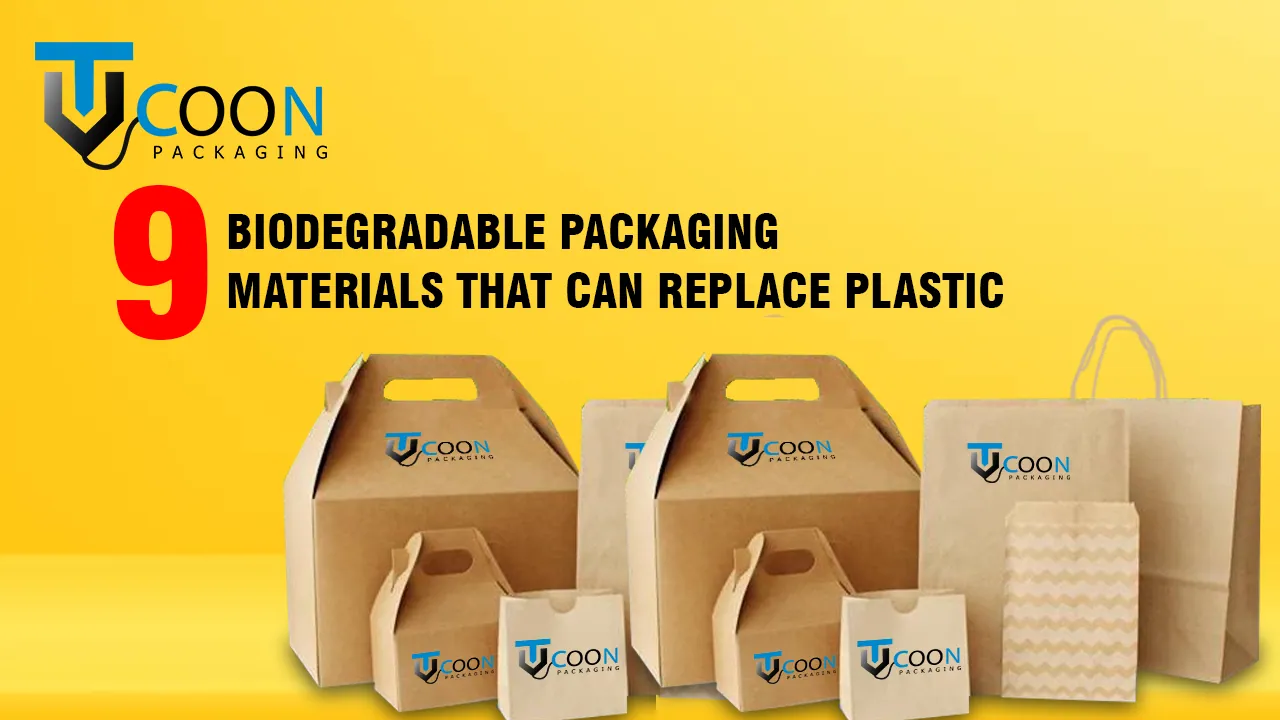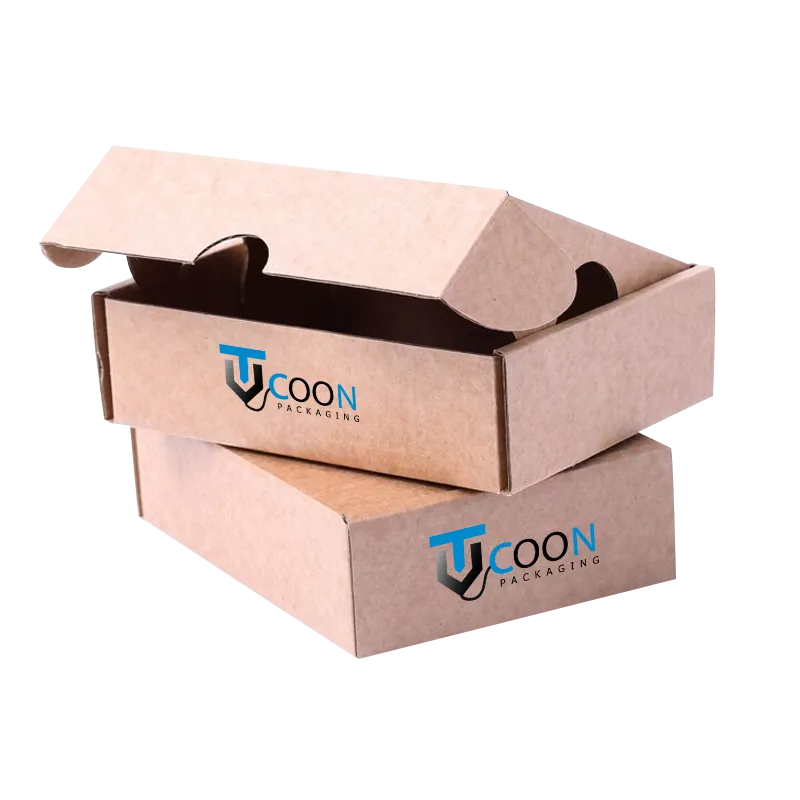The world is quickly moving away from plastic packaging and looking for more sustainable materials. Biodegradable packaging is the new frontier in packaging and offers several benefits over traditional plastics. Here are nine biodegradable materials to replace plastic in your next packaging project.
What is Biodegradable Packaging?
Biodegradable packaging is made from materials that can break down easily in the environment. This means that they won’t harm the planet or its inhabitants when they’re disposed of. In contrast, traditional plastic packaging is not biodegradable and can take centuries to decompose.
Why Use Biodegradable Packaging?
There are many reasons to switch to biodegradable packaging. It helps reduce the amount of plastic that ends up in landfills and oceans. It also eliminates the need for toxic chemicals in manufacturing, and it’s better for the environment overall.
What Are The Best Biodegradable Packaging Alternatives?
When deciding which biodegradable packaging is best for your needs, there are many factors to consider. These include environmental impact, cost efficiency, material safety, recyclability, and more. That being said, here are some of the top options you have for this packaging.
#1 – Natural Paper
Paper is one of the most common biodegradable packaging materials. It’s also a renewable resource, and it can be recycled indefinitely without losing its integrity. If you opt for paper as your primary material, make sure to choose uncoated papers that are free of bleaches, inks, and chemicals. Remember that paper production is not without impact, so make sure to minimize its consumption when possible.
#2 – Hemp
Hemp is another material that’s eco-friendly and easy on the planet. It’s made from industrial hemp plants grown for this purpose only, which means that it doesn’t have a detrimental effect on the earth’s other inhabitants. Hemp is also a sustainable material that can be reused many times over with no quality loss. It won’t release toxic chemicals when thrown away or burned (which makes it great for compostable packaging materials).
#3 – Natural Polymers
Polylactic acid or polylactide is a biodegradable packaging made from corn starch. It’s also known as PLA, which you probably recognize as the #7 code on most plastic products that are recyclable. This synthetic polymer can easily be recycled, composted, or incinerated without producing toxic fumes (unlike traditional plastics). It is, however, derived from corn starch, which means that it would be best used in packaging for food products.
#4 – Starch-Based Bioplastics
Starch bioplastics are similar to natural polymers and made from plant sugars and starches (usually corn) that have been chemically altered to resemble plastics. These biodegradable plastic alternatives are recyclable, and they decompose quickly in soil or water without releasing toxic chemicals. However, the production of these materials is not as environmentally friendly as PLA, so use them when you can’t find PLA products for sale.
#5 – Cork
You might not realize it, but cork is one of the most common (and biodegradable) packaging materials available! It’s used in things like bottle stoppers, wine corks, insulation, bulletin boards, flooring, and more. Cork trees are harvested for this purpose only; they can be regrown quickly after being stripped of their bark without suffering ill effects. Plus, cork is entirely biodegradable and can be composted or burned for fuel without releasing toxic fumes.
#6 – Bio-Plastics
Bio-plastics are plastics made from biomass (organic materials) that have been treated to resemble more traditional plastic products. The critical difference between bioplastics and their petroleum-based counterparts is that bioplastics are more eco-friendly since they’re derived from renewable sources. Although bio-plastic packaging is not yet widely available, there are many benefits to using this type of biodegradable material in your company’s packaging needs.
#7 – Cellulose
Cellulose bioplastic is made from cellulose pulp, making it biodegradable and compostable. This type of packaging material is also recyclable, but separating the polymers used in its production can be rather taxing on natural resources. However, there are environmental benefits to choosing this option over other types of plastics.
#8 – Paper-Based Plastics
Paper-based plastics are made from paper fibers that have been processed into pellets, which are then heated and molded into the desired shape. These biodegradable materials are recyclable since recycling paper is already common practice, but you might need to search for a company that uses this type of packaging.
How Custom Biodegradable Packaging Is Better Than Plastic
Plastic is a material made from fossil fuels, and it is not biodegradable. This means that it takes hundreds of years for plastic to decompose. Plastic also releases toxic chemicals into the environment, contaminate water supplies, and harm wildlife.
On the other hand, Biodegradable packaging is made from natural materials such as plant starch or cellulose. These materials break down quickly when exposed to air, water, or heat, so they won’t pollute the environment like plastic does. Moreover, biodegradable packaging doesn’t release any harmful chemicals into the atmosphere.
So if you’re looking for an eco-friendly alternative to plastic, biodegradable packaging is the way the benefits of using biodegradable materials over plastic.
Nine Different Types Of Biodegradable Materials To Replace Plastic With
Many biodegradable materials on the market can replace plastic for packaging. These materials biodegrade within a year, perfect for those looking for an eco-friendly alternative. Here are nine examples of biodegradable materials that can be used to replace plastic:
- Cornstarch
- Vegetable oil
- Bagasse
- Jute
- Cotton
- Willow bark
- Seaweed extract
- Bamboo powder
- Hemp
Why Use Custom Biodegradable Materials To Replace Plastic?
These nine types of biodegradable packaging are environmentally friendly, which is excellent for the future of our planet. Using these kinds of materials to packaging goods can help save energy, reduce greenhouse gas emissions, and help divert waste from landfills. These biodegradable materials are also safe for the environment, which is another great benefit.
Also Read: How To Increase Brand Awareness With Custom Eyelash Packaging
It’s important to recognize that biodegradable packaging is not just recyclable but is genuinely compostable. For example, if you use biodegradable materials for packaging meat or fish, you need to ensure your customer knows how to dispose of them properly. From planting trees to cleaning up beaches, there are many ways you can help the environment through biodegradable packaging.
Conclusion
Biodegradable packaging is the new frontier in eco-friendly materials, and it’s important to know which bio degradable packaging alternatives are available. The nine materials on this list can replace plastic without sacrificing safety or convenience.
Whether you need a compostable box for your bakery goods or an environmentally friendly alternative to cling wrap, the above nine options will get the job done! If you want more information about how any of these work or would like help finding one that suits your needs best, subscribe to our newsletter today!



